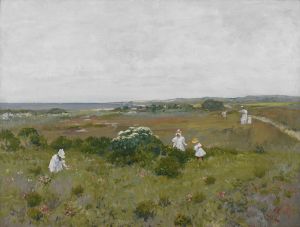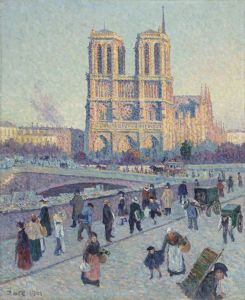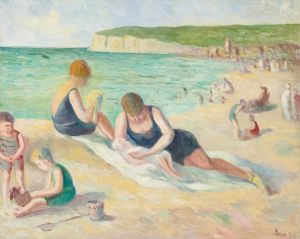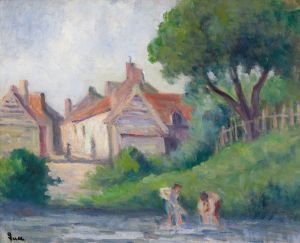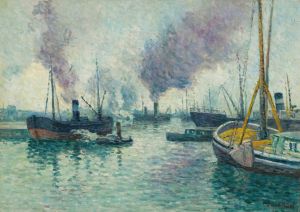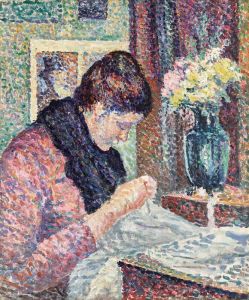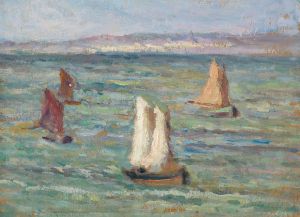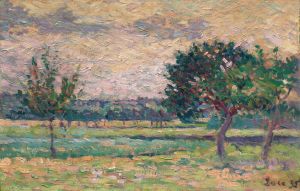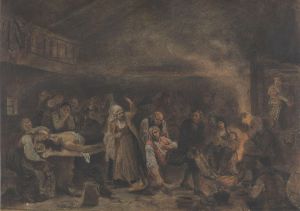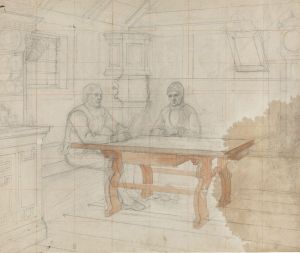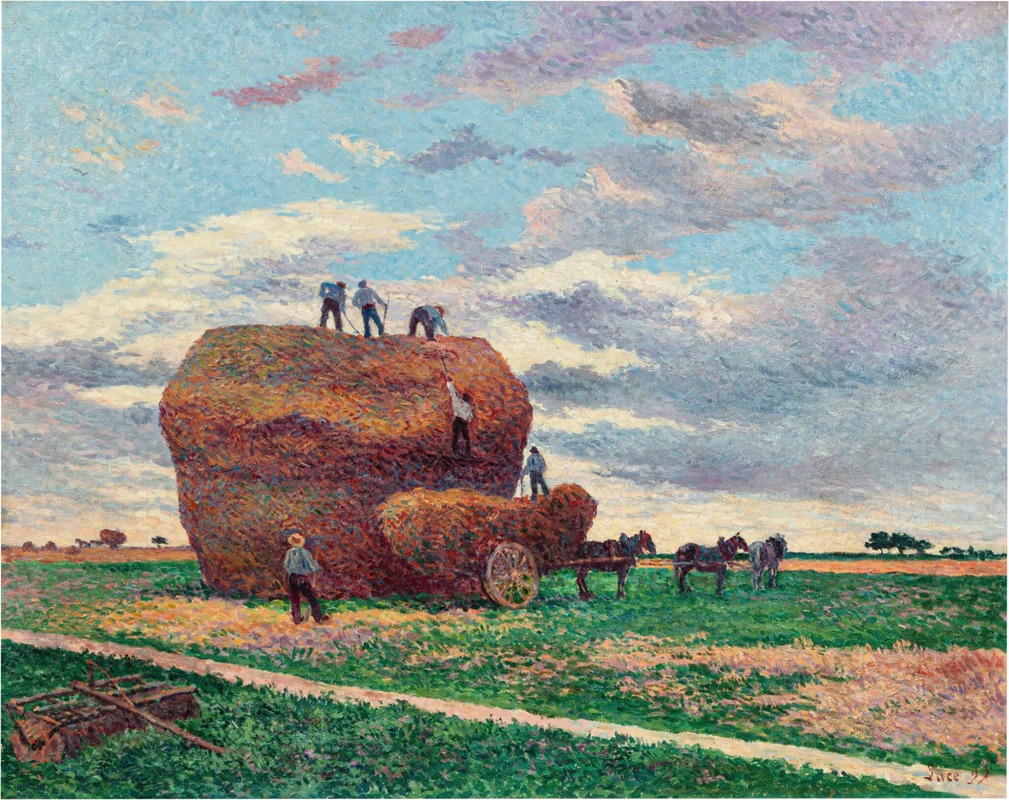
La meule de foin
A hand-painted replica of Maximilien Luce’s masterpiece La meule de foin, meticulously crafted by professional artists to capture the true essence of the original. Each piece is created with museum-quality canvas and rare mineral pigments, carefully painted by experienced artists with delicate brushstrokes and rich, layered colors to perfectly recreate the texture of the original artwork. Unlike machine-printed reproductions, this hand-painted version brings the painting to life, infused with the artist’s emotions and skill in every stroke. Whether for personal collection or home decoration, it instantly elevates the artistic atmosphere of any space.
Maximilien Luce was a French Neo-Impressionist artist known for his contributions to the Pointillist movement, which was characterized by the use of small, distinct dots of color applied in patterns to form an image. Born in Paris on March 13, 1858, Luce initially trained as an engraver before turning to painting. He became associated with the Neo-Impressionists, a group that included artists like Georges Seurat and Paul Signac, who were interested in the scientific study of color and light.
One of Luce's notable works is "La Meule de Foin" (The Haystack), which exemplifies his mastery of the Pointillist technique. This painting captures a rural scene, focusing on a haystack, a common subject in the Impressionist and Post-Impressionist movements. The choice of a haystack as a subject reflects the influence of earlier artists like Claude Monet, who famously painted a series of haystacks to explore the effects of light and atmosphere at different times of day and in various weather conditions.
In "La Meule de Foin," Luce employs the Pointillist technique to depict the play of light on the haystack and the surrounding landscape. The painting is characterized by its vibrant use of color and meticulous attention to detail, with each dot of paint contributing to the overall harmony of the composition. Luce's approach to color was influenced by the scientific theories of the time, which suggested that colors could be mixed optically by placing small dots of pure color next to each other, rather than blending pigments on a palette.
The painting reflects Luce's interest in capturing the effects of natural light and his commitment to the ideals of the Neo-Impressionist movement. Unlike some of his contemporaries, Luce often chose to depict scenes of everyday life, including urban landscapes, industrial scenes, and rural settings. His work is noted for its social commentary, as he frequently portrayed the lives of the working class and the impact of industrialization on society.
"La Meule de Foin" is a testament to Luce's skill as a painter and his dedication to the principles of Neo-Impressionism. The painting not only demonstrates his technical prowess but also his ability to convey the beauty and tranquility of the rural landscape. Through his use of color and light, Luce invites viewers to appreciate the subtle nuances of the natural world.
Maximilien Luce continued to paint throughout his life, and his work remains an important part of the Neo-Impressionist legacy. He passed away on February 6, 1941, leaving behind a body of work that continues to be celebrated for its innovation and artistic vision. "La Meule de Foin" is just one example of his contribution to the art world, showcasing his unique ability to blend scientific precision with artistic expression.








